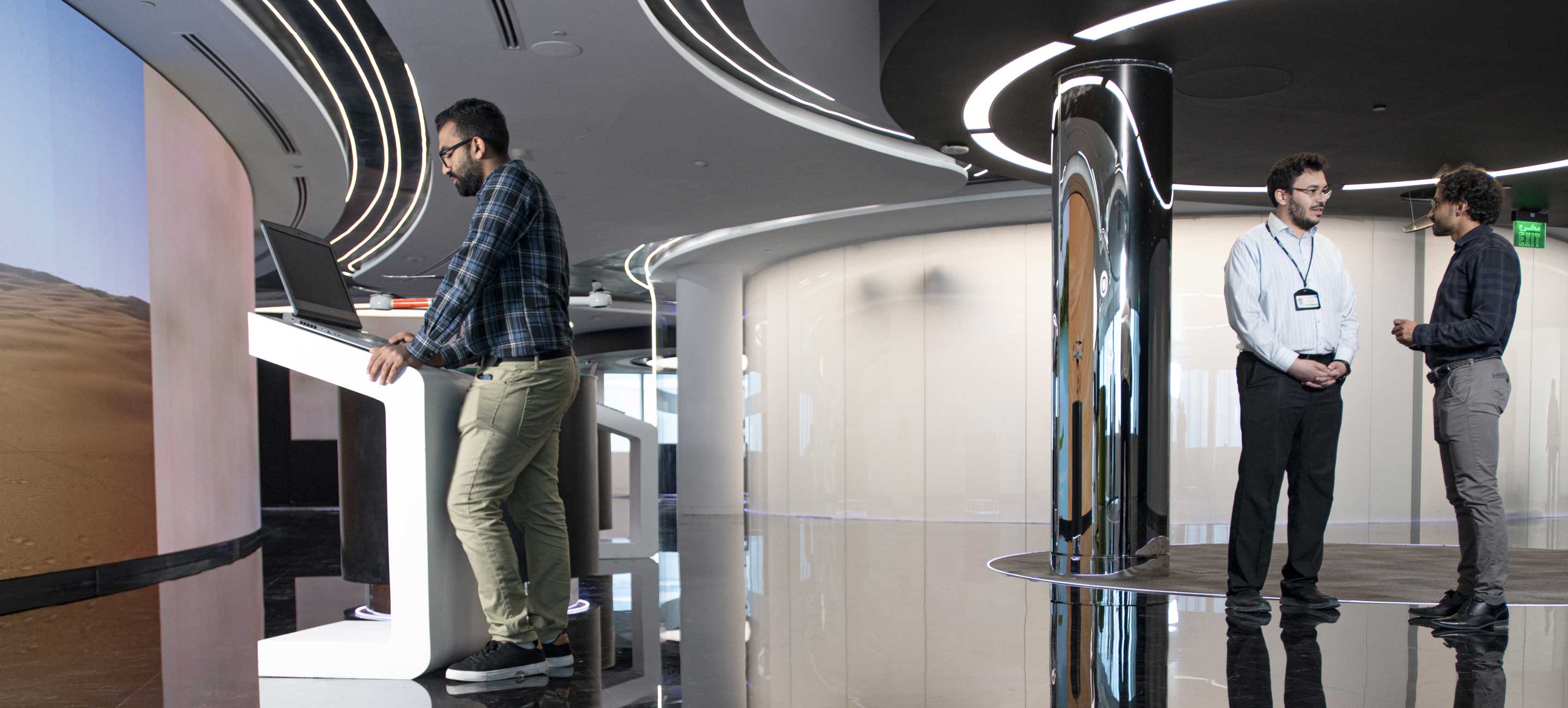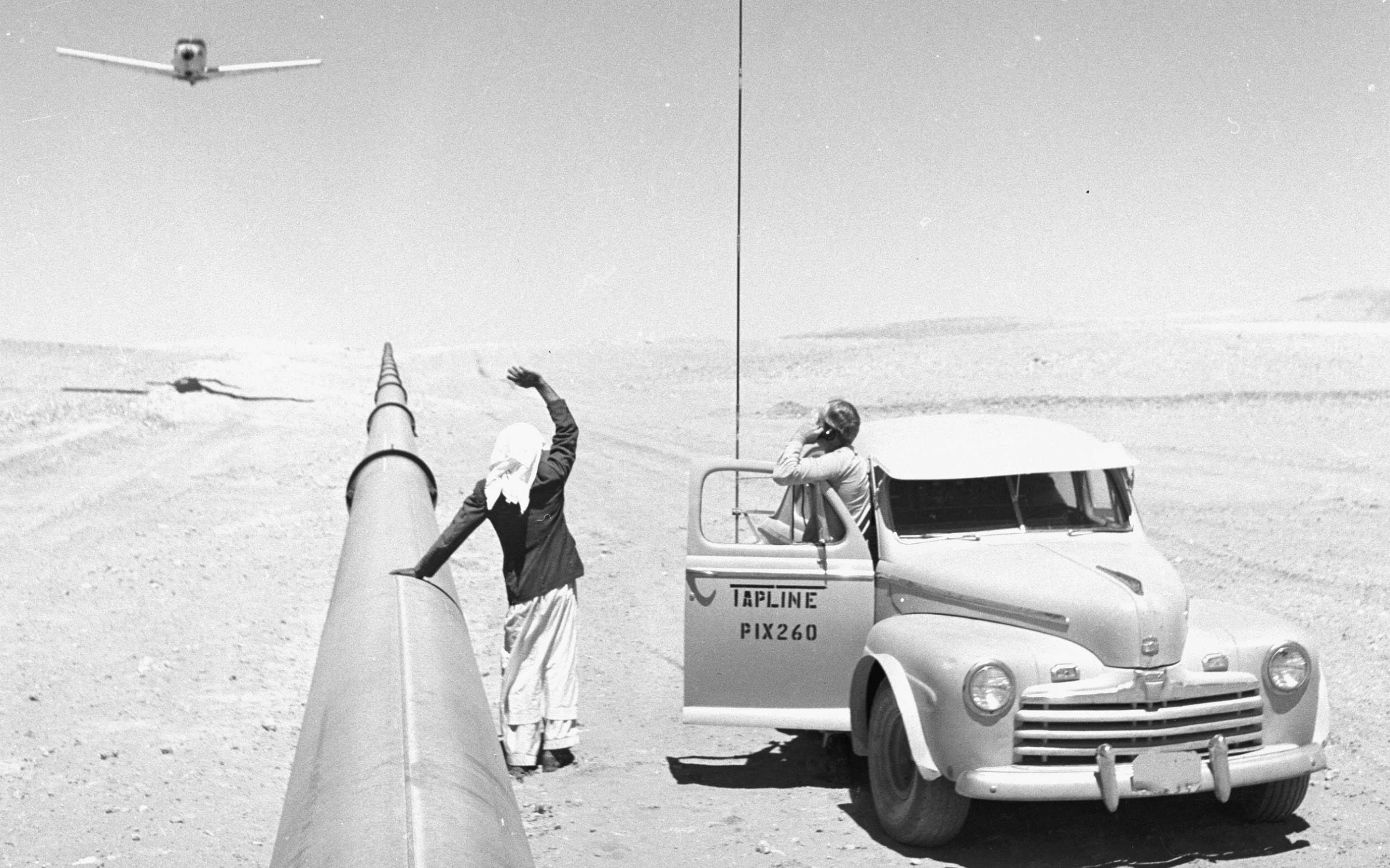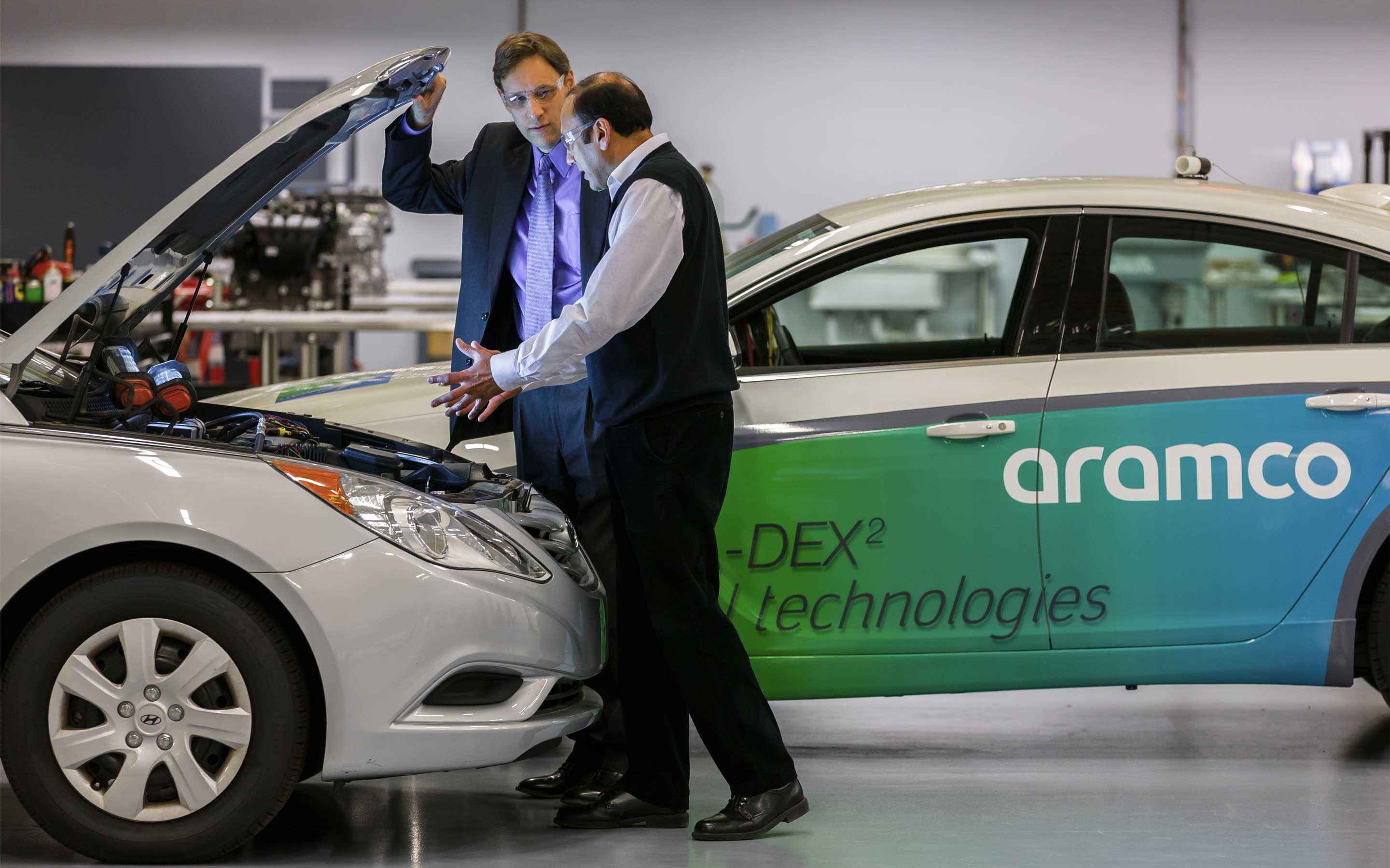Leading global energy innovation
We invest in new technologies to meet the world’s energy demands ever more reliably.

- We find effective energy solutions through the use of technologies developed within our global R&D ecosystem
- Our Company has three specialist R&D facilities in the Kingdom that work alongside global centers located in the United States, Europe and Asia
- These solutions are making our operations more efficient, sustainable, and cost-effective
Since its foundation in 1933, the Company has been invested in the development and implementation of new technologies. During these early years, our technical expertise and drive for innovative solutions were primarily focused on major engineering projects, such as the construction of the Tapline, a vast pipeline carrying oil from Saudi oil fields across 1,000 miles of desert to the Mediterranean coast.
The tapline spanned over 1,000 miles of desert

Now, almost a century later, our focus is on developing and utilizing advanced technologies to bring forward a new generation of more sustainable energy solutions — ranging from 4IR applications such as the deployment of drones, the integration of machine learning and artificial intelligence (AI), all the way to creative chemical innovations and emissions reduction applications.
Centers of excellence
The Research & Development Center in Dhahran is focused on the testing and deployment of cutting-edge technologies that enhance the reliability, efficiency, and safety of our operations. Our ongoing commitment to creating new energy solutions via technology is clearly demonstrated in our expanding network of domestic and international research centers. In addition to our state-of-the-art 4IR Center, Aramco’s local research efforts are based at three facilities located in the Kingdom. The Exploration and Petroleum Engineering Center - Advanced Research Center (EXPEC ARC) opened in Dhahran in 2006. This research center covers our upstream operations, from geology, geophysics and reservoirs, to drilling and production engineering.
The latest addition to our R&D network in the Kingdom is the Aramco Research Center (ARC KAUST). ARC KAUST is located at KAUST (King Abdullah University of Science and Technology), and aims to become a world leader in developing more sustainable hydrocarbon solutions through the use of advanced materials, machine learning, digital prototyping, robotics, and AI.

The state-of-the-art 4IR Center
Global impact
Our global network of research centers plays a key role in our drive for innovation, and each provides a unique contribution in the development of new technologies.
In the United States
The focus of our United States presence spans a variety of sectors; from unconventional reservoir engineering, to drilling, production, computational modeling, advanced materials, and transportation. Our center in Houston primarily focuses on upstream technologies for both conventional and unconventional resources, for the purpose of supporting discovery, recovery, and sustainability goals. Specializing in many research areas, including improving well-productivity, nano-based polymers, drilling operations and more, our Houston center is our largest R&D center outside Saudi Arabia.
Our second center in the U.S. is located in Boston, and houses research specializing in computational modeling, advanced materials, and nanotechnology. The innovative ecosystem surrounding the center provides it with collaborative research opportunities with top world universities, focusing on modeling, visualization, simulation, and applications of advanced materials.
The third center is strategically located in Detroit, near leading auto manufacturers and technology providers, to complement its development of state-of-the-art technologies for the transportation sector. It focuses on transportation technologies that reduce the overall environmental impact, and the running costs, of both current and future engines.
In Europe
The research centers in Europe — situated in Paris, Aberdeen, and Delft — further contribute to our efforts to develop innovative technological solutions. The Paris Research Center develops technologies that address concerns associated with fuels and the Internal Combustion Engine (ICE). It is strategically located at IFP Energies nouvelles (IFPen), a French public sector research, innovation and training center, carrying out research in energy, transportation, and the environment. This strategic placement grants us access to IFPen’s world-class facilities, as well as their links to leading European auto-manufacturers, and supports our advanced fuel-technology solutions.
The Aberdeen Center specializes in drilling and production technologies. Established in Scotland, this center is also the location of the European branch of Saudi Aramco Energy Ventures (SAEV), our investment and energy development arm, which builds relationships with other energy technology companies to support the creation of new technologies.
Located at Delft University of Technology in the Netherlands, our Dutch center supports our efforts to better understand our subsurface geology, through its focus on seismic processing and subsurface imaging.
In Asia
In Asia, the Company collaborates with Korea Advanced Institute of Science and Technology (KAIST), through its Daejeon Center, to create solutions to transform CO2 into valuable products that are both economically and environmentally feasible. Our Chinese research center, situated in Beijing, specializes in projects dedicated to improving chemically-enhanced oil recovery and the progression of advanced seismic imaging technologies.
The local in-Kingdom centers work in close collaboration with specialists across our entire global network of innovation hubs, creating a network effect by which shared knowledge and expertise accelerates innovation, while also enabling our technological advances to have a global impact. These advances are well underway in areas such as machine learning, data analytics, robotics, drone technologies and more.
Aramco Research Center, Detroit

Machines that learn
Much of our R&D work is underpinned by 4IR technologies. Virtual Flow Metering (VFM), for example, which has been developed by our EXPEC ARC team in collaboration with our other research centers, uses computer software to predict oil, water, and gas flows, without the need to install physical meters. This happens by feeding physical data about pressure and temperature into an AI algorithm.
Data science and high-performance computing solutions, including seismic imaging, reservoir simulation, and geological modeling, are being used to optimize upstream operations. At ARC KAUST, AI and machine learning enable us to predict and simulate operational performance digitally, minimizing the number of experiments and field visits required for data collection. Harnessing 4IR technologies has a range of benefits, from improving productivity and profitability, to enhancing safety, efficiency and sustainability.
Lowering carbon emissions
Our R&D centers are engaged in developing a number of technologies focused on lowering emissions. These include our potentially transformative technology, mobile carbon capture (MCC), which is designed to lower the carbon footprint of the transport sector. The latest engineering design of Aramco’s MCC technology, demonstrated on a Toyota Camry vehicle, is able to reduce up to 25% of the emitted CO2 from the tailpipe. This technology still has a way to go before it is market-ready, but we believe it offers significant promise.
ARC KAUST is researching the use of carbon fiber and glass fiber for applications including piping, tools, and construction — advancing the use and development of non-metallic materials. Our non-metallic centers, located in the United States, England, and China, further contribute to accelerating non-metallic innovations, particularly in the oil and gas, and building and construction sectors.
Robotics and automation
The use of robots, drones, and advanced sensing systems, is already transforming many of our operations. Our research teams at the R&D Center have developed several robotic technologies. These include a Hybrid Inspection Drone that uses AI to land magnetically on elevated pipes before inspecting them; Detection of Possible Corrosion Under Insulation (DPCUI), which is a system that analyzes infrared imagery to detect corrosion that would otherwise have been concealed beneath insulation; and SWIM-R, a robot that operates underwater to inspect undersea pipelines.

The use of robots is already transforming many of our operations
EXPEC ARC has developed another innovative robotic technology that operates on the seabed. Called SpiceRack, this autonomous vehicle conducts seismic surveys in half the time and at a 30 percent lower cost than conventional methods. At present, a swarm of 200 autonomous underwater vehicles has successfully operated and explored the subsurface points of the seabed area for hydrocarbon resources.
A web of innovation
Our local and global research centers clearly have a critical role to play in the Company’s R&D strategy. By creating a web of connected technologies we are helping to diversify the Company’s portfolio of products, while also creating more sustainable, efficient, and cost-effective solutions.
From mobile carbon capture, to robotics and drone technologies, our transformative digital solutions developed by our R&D centers focus on addressing global energy challenges important to all of us. Our international network of research centers are the engine propelling the Company — and the energy industry — to continue meeting the world’s energy demands reliably, while also spearheading digital innovation in energy, locally and globally.
More from Elements
The material in this article is intended to be for general informational purposes only, and readers should not place undue reliance on the statements or opinions therein. Any information provided speaks only as of the date this content was published and Saudi Aramco undertakes no obligation to correct, update, or revise any statements or opinions made in or implied by this article.



